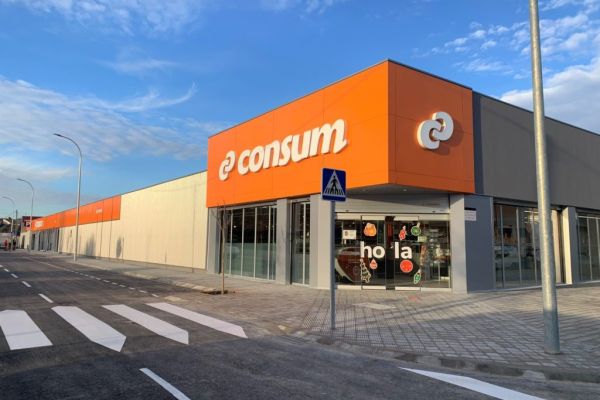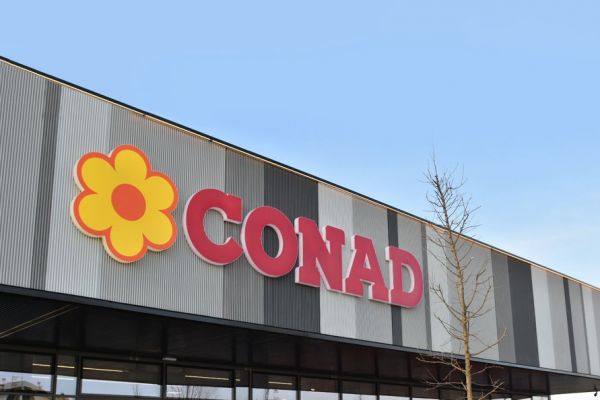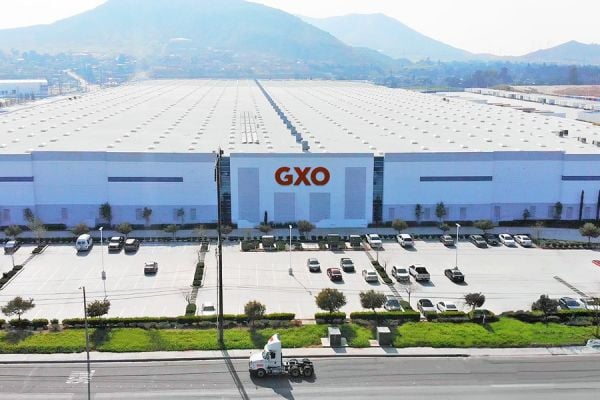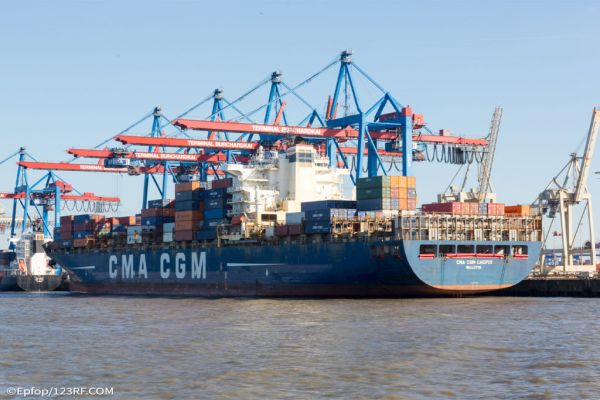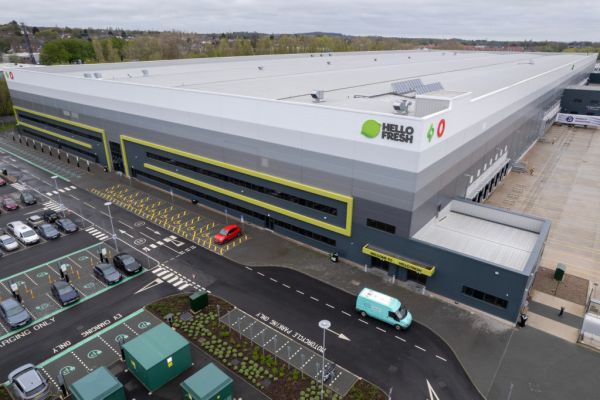Three material flows, three shipping areas, three load carriers, and three different target customer groups sums up Asko's new, fresh-food warehouse in Norway.
More than a quantitative challenge for WITRON's technical systems, the implementation of logic and dynamics in its processes, the integration of the technology, and design were decisive factors in building this successful start-up.
The Project
The white, plain refrigerator with the ruby colored Asko logo at the side of the buffet in the hotel is rarely noticed by the restaurant guests. For WITRON's project manager, Holger Weiß, it is a mantra.
Every morning and every evening, it reminded him of this task during the project realisation - the fresh food warehouse of the Norwegian food retailer Asko has to run at the beginning of 2018. Otherwise, the refrigerator remains empty.
The warehouse project in Vestby, approximately 40 kilometres away from the Oslo metropolitan region was one of the most complex projects handled by Weiß.
The new fresh food warehouse of Asko with a size of 24,000 square metres not only fills refrigerators in restaurants or hotels (14,000 customers) but also supplies more frequently, and at the very last minute.
Furthermore, it supplies to more than 2,600 stores and 12 regional warehouses throughout Norway – from Oslo in the south of Tromsø at the Arctic Circle, about 1,800 km away.
On such routes, the trailer can’t be half-empty. About 80% of the picked goods are supplied to regional warehouses, the remaining 20% are sent to stores and hotels in almost equal parts.
“On top of that, we have to merge dry goods from the nearby dry goods central warehouse with picked goods from the fresh food warehouse in a new consolidation unit – a warehouse in the warehouse, so to speak,” Weiß added.
Interlinking Intelligent Processes
Director of Asko, Arild Åsmul is familiar with the challenges of the logistics processes involved.
He explained, “We did not explicitly search for a technical expert to realise the project or look for technical systems. We looked for a company that understands our process and dynamics, that can map these processes, and develop or adapt technical solutions for them.”
Both Asko and WITRON reviewed originally designed processes in the current project in order to harmonise processes and technology.
Flexibility was an important factor for both partners.
“Intelligence was also required to avoid bottlenecks on the conveyor system,” Åsmul said.
Weiß explained that the ramping up of the logistics centre was carried out in three stages, which also illustrated the complexity of the project.
“Thanks to our fully developed standard modules, we were able to implement an overall concept that handles the daily business in a reliable manner and, at the same time, is flexibly designed to meet future requirements”, he added.
The Process
OPM was the first system that went into operation in January of 2017, followed by the DPS / OCB, and MPS systems in March 2017.
Subsequently, the processes of both systems were merged in May of 2017.
The consolidation unit was then completed in June of 2017.
Since then, WITRON's onsite team of 47 staff members, spread over three shifts, provide problem-solving and process-optimisation services 7 days a week.
Both the customer and the service provider have had entertaining days behind them.
One of the challenges for the partners is the implementation of technology to control three different material flows from receiving to dispatch.
Every material flow depends on the order and the definition of the customer. This also means that the material flows are not isolated functions but are characterised by numerous interdependencies.
In other words, intelligent linking is employed. Goods arriving at the receiving area, are stored in the fully automated high bay warehouse, and then they take three different routes through the logistics center.
Automatic Picking System
At Asko sausage or dairy products are transported on the conveyor system to the Order Picking Machinery (OPM), which is a fully automated system. The majority of the total volume is picked here.
The heart of the system is the loading device called COM (Case Order Machine), which is used by many food retailers across the globe.
This system is able to pick more than 500 cases per hour onto load carriers in a product-gentle and store-friendly manner.
Asko operates 14 COM machines that pick more than 7,000 cases per hour. Four additional COMs are currently being implemented, an expansion that was already considered in the concept when starting the design phase.
The implementation became necessary earlier than originally planned due to the positive business development of Asko, which were also influenced by innovative logistics processes and the resulting competitive advantages.
Dynamic Picking System
The second route for the separately packed steaks is via the Dynamic Picking System (DPS) and the Order Consolidation Buffer (OCB).
Here too, the extensions are already in the pipeline and will be implemented during ongoing operation by the end of 2019.
The highly dynamic and semi-automated picking of small parts in the DPS is supported by a pick-by-light system. Asko also stores large tote-able slow movers in the DPS.
The DPS works according to the goods-to-person / person-to-goods principle. Depending on the order structure, the items are arranged in the pick front either permanently or on demand, such that it is optimised at all time.
Asko uses totes with three different height options. The DPS area is again dependent on the OPM and thus also on the following MPS unit.
Specific Products
The automatic system cannot be employed in the case of reindeer meat from northern Scandinavia. Therefore, it is picked with the Module Picking System (MPS) from WITRON.
The solution is a goods-to-person system supported by pick-by-light. The WITRON material flow uses computers to control all necessary pallet movements from the high-bay warehouse, and indicates to the operator the quantities to be picked by means of pick-by-light displays.
Åsmul added, “If a hotelier orders fresh goods such as yogurt from the automated OPM area as well as reindeer meat, the reindeer meat is manually added to the yogurt packed on pallets or roll containers in the MPS area.
Dry And Fresh Food
“We are making it a little more difficult for the WITRON colleagues. In addition to the three material flows, there are three load carriers that we have to handle – half pallets, Euro pallets, and roll containers,” said Åsmul.
“In addition, the picked dry goods have to be consolidated as well,” Weiß added.
If a hotel customer orders fresh food and dry goods from the nearby logistics center, the cases are merged at ergonomic workstations located in a semi-automated consolidation zone in the new fresh food warehouse.
This process is also controlled by the WITRON warehouse management system. The picked fresh goods are transported via connected pallet lifters to another receiving area, where it is manually packed with dry goods from another order.
If the orders for fresh food are transferred directly to one of the twelve regional warehouses of Asko, the packed load carriers leave the fresh food warehouse via the shipping area.
If, however, the regional warehouses also order dry goods, fresh and dry goods meet in a cross-docking unit to be shipped from there. The WITRON warehouse management system takes the lead also for this process.
A Logistical Masterpiece
This new fresh food project took three years to complete, and is considered to be a logistical masterpiece by Asko employees.
Weiß further explained, “In addition to the installation and adjustments within the conveyor system, we especially had to map the interdependencies in the orders through the software and had to control the material flow in such way, for example, to avoid long waiting times for the dry goods or to ensure that hoteliers receive their goods in time.
"Unfortunately, it is not possible to just accelerate the system operation, intelligence and flexibility are decisive.”
“We have a buffer for the regional warehouses, but not for orders that have to be shipped to restaurants or hotels,” added Åsmul.
© 2018 European Supermarket Magazine – your source for the latest retail news. Sponsored content. Click subscribe to sign up to ESM: European Supermarket Magazine.





